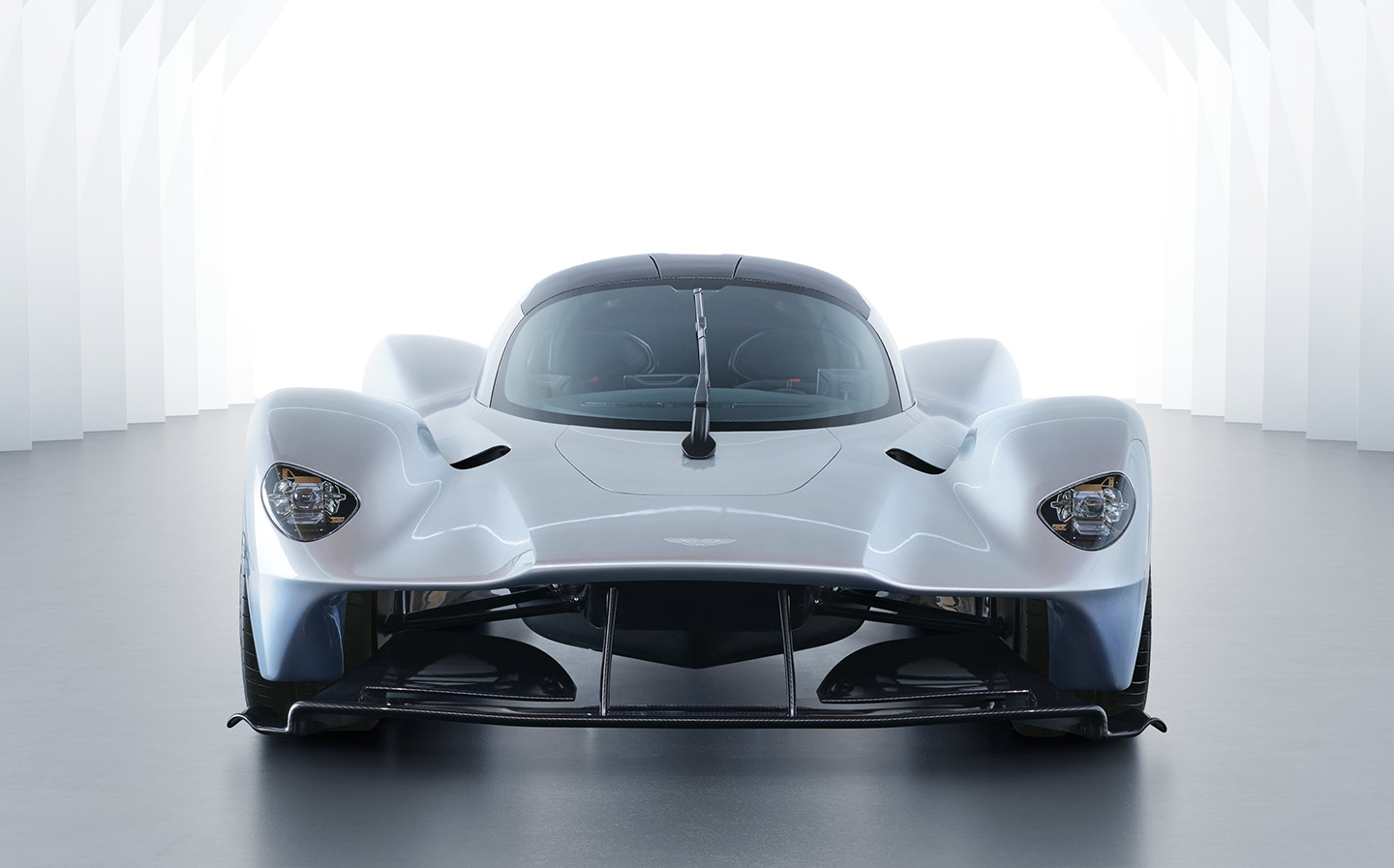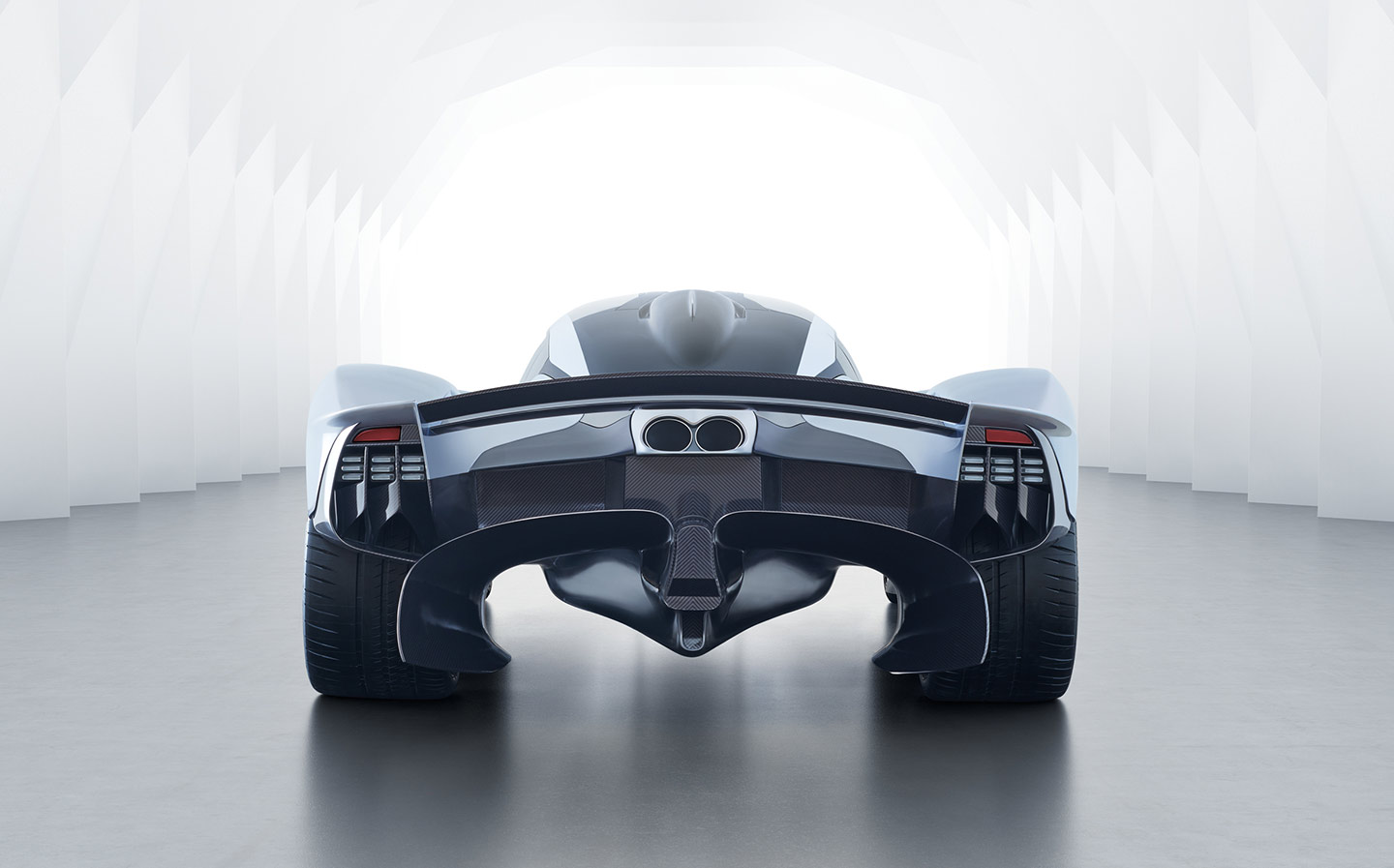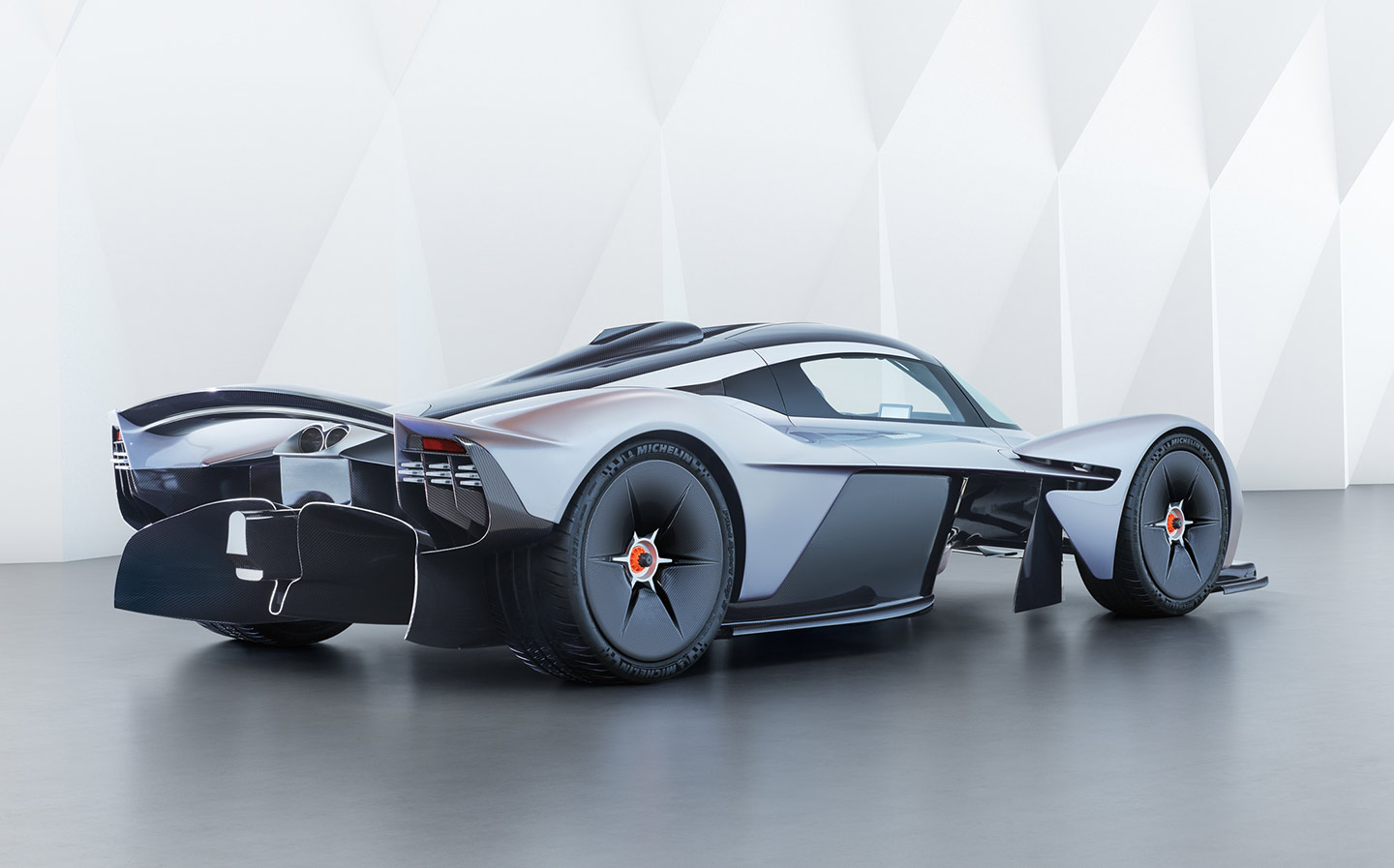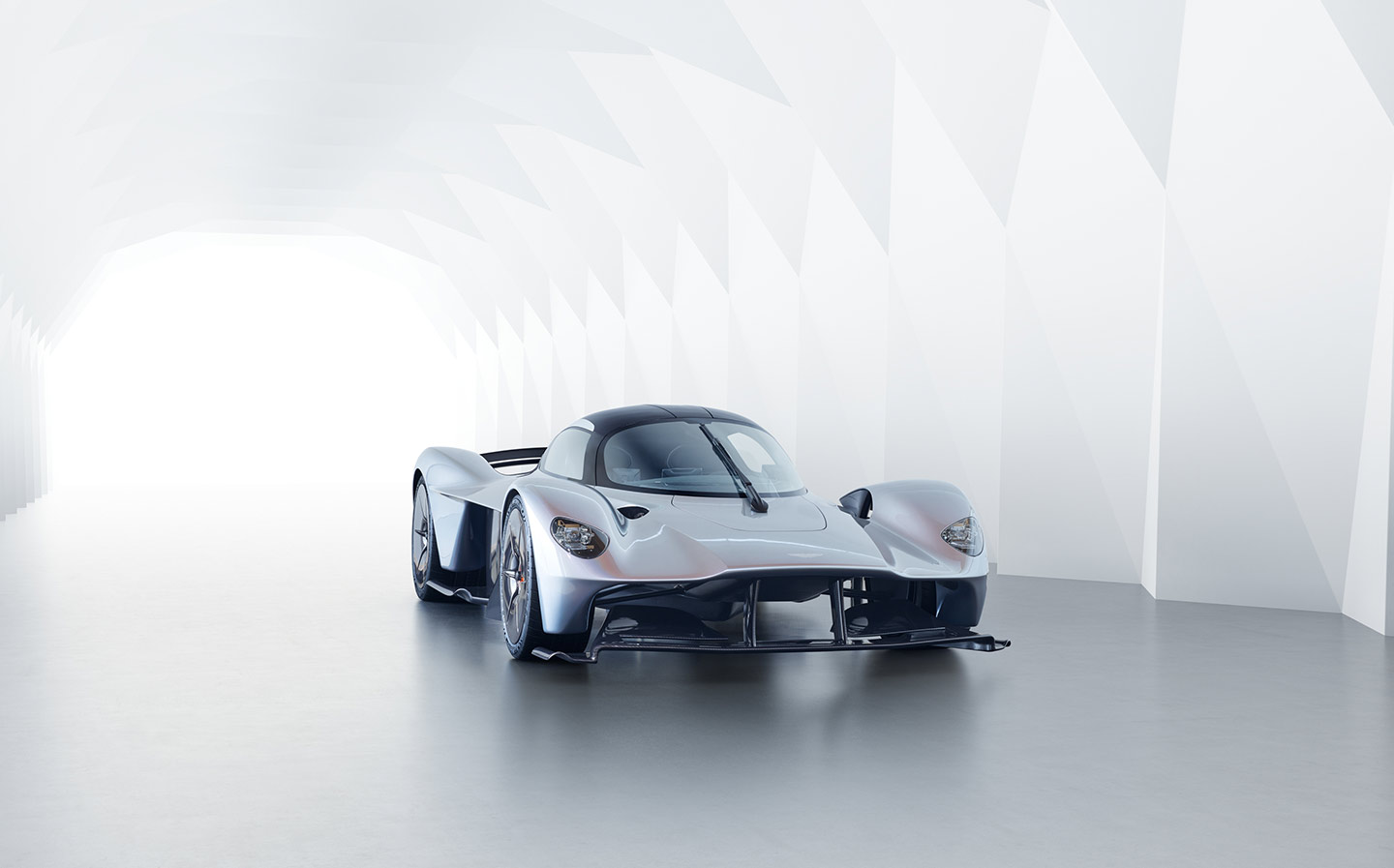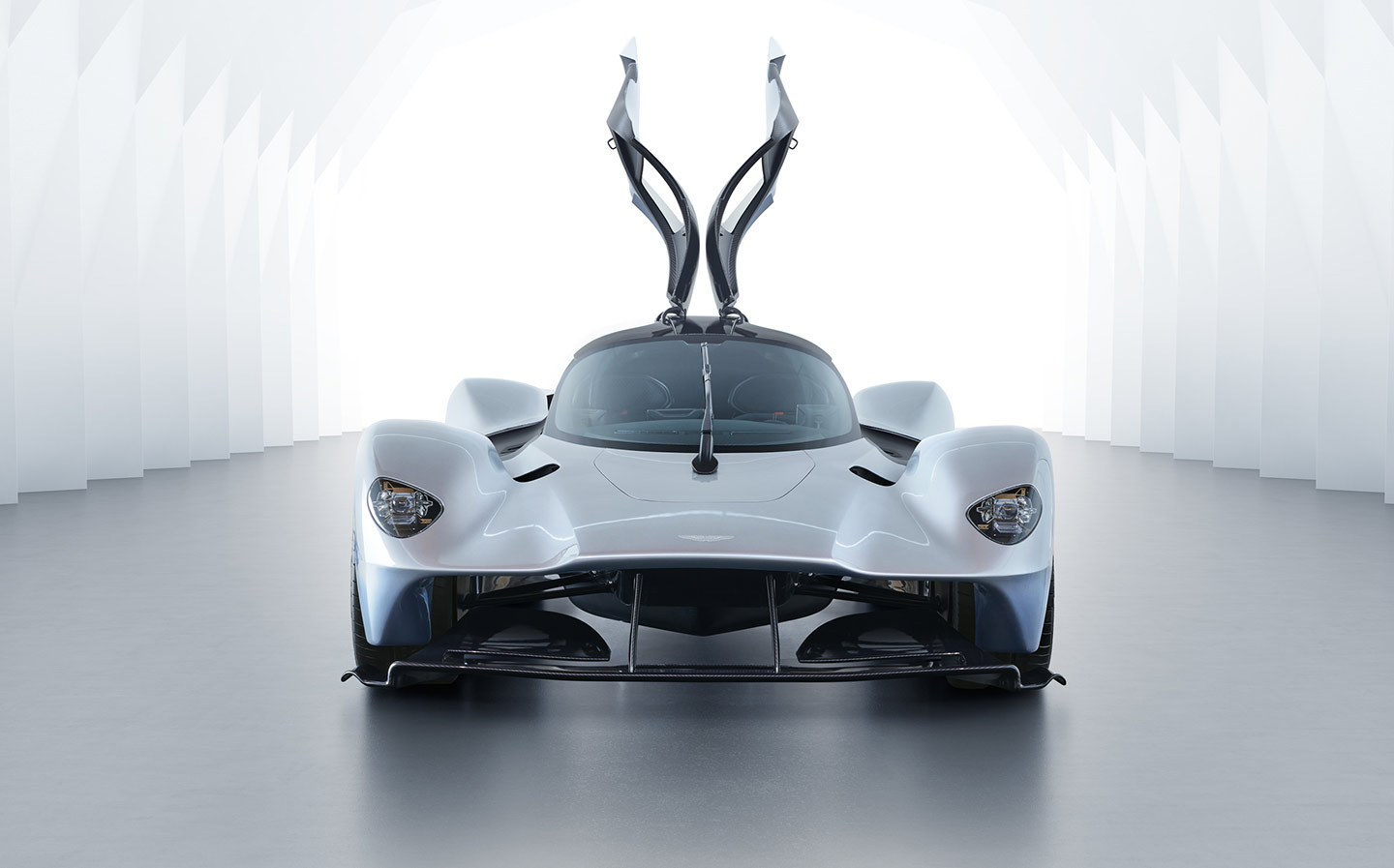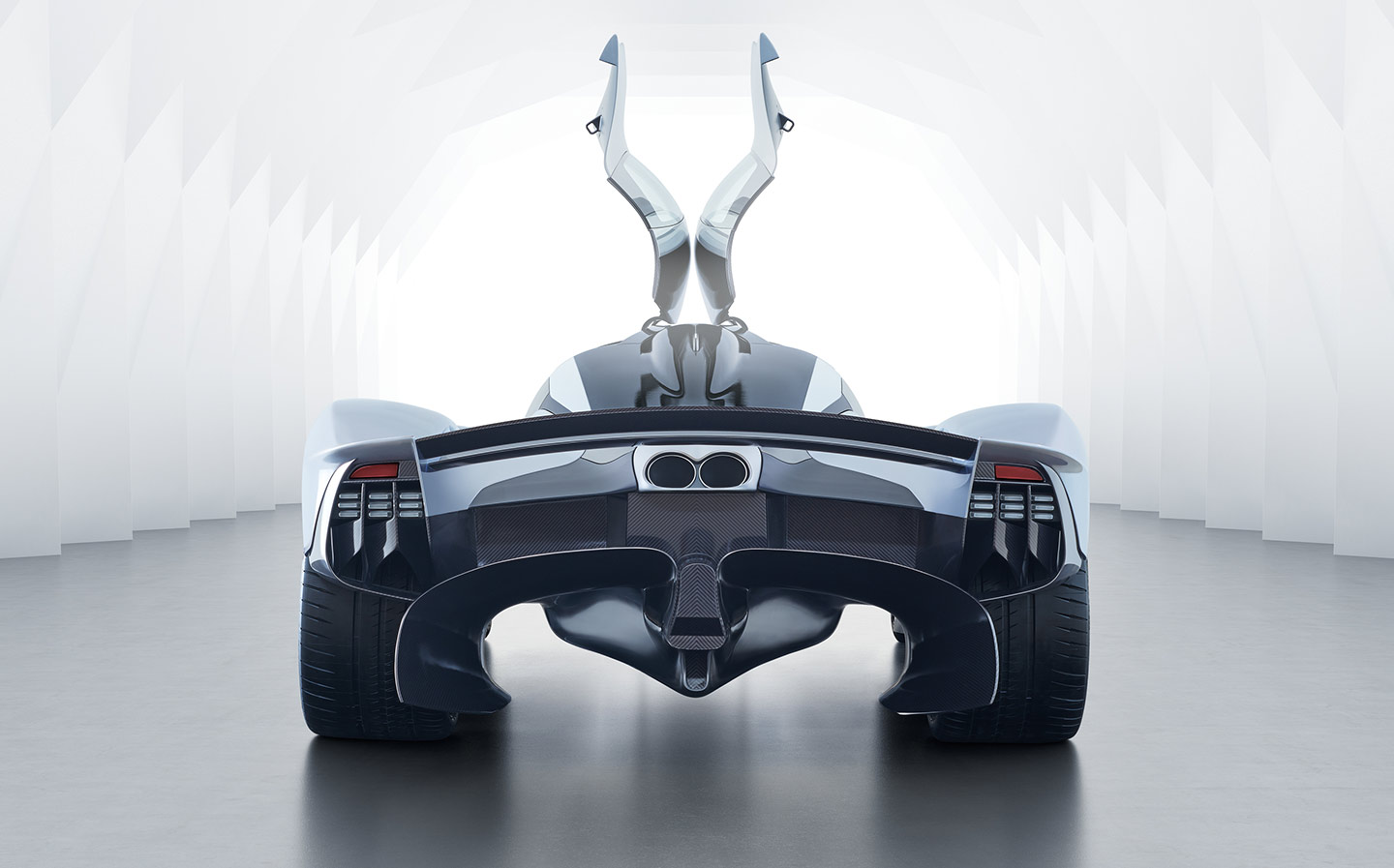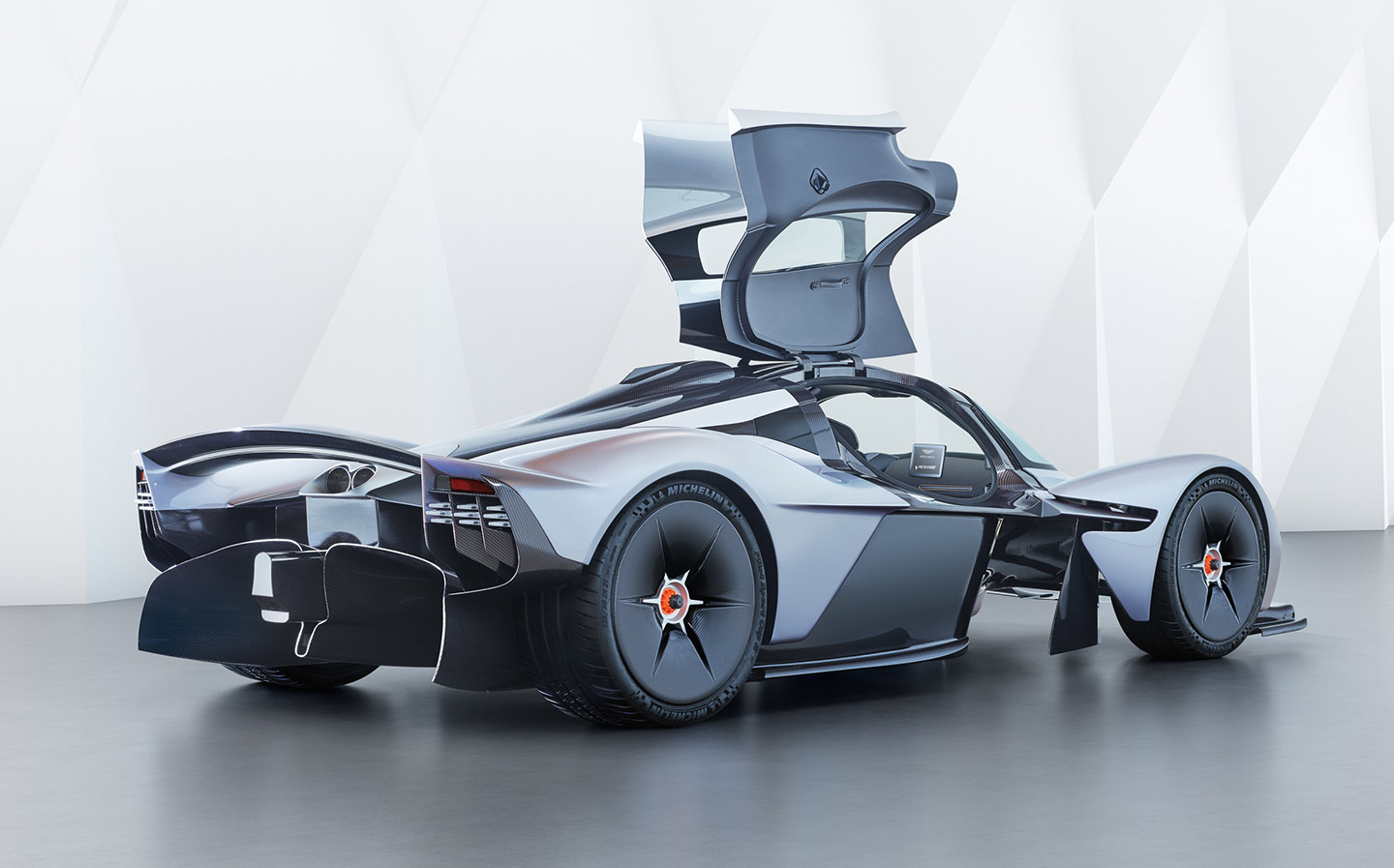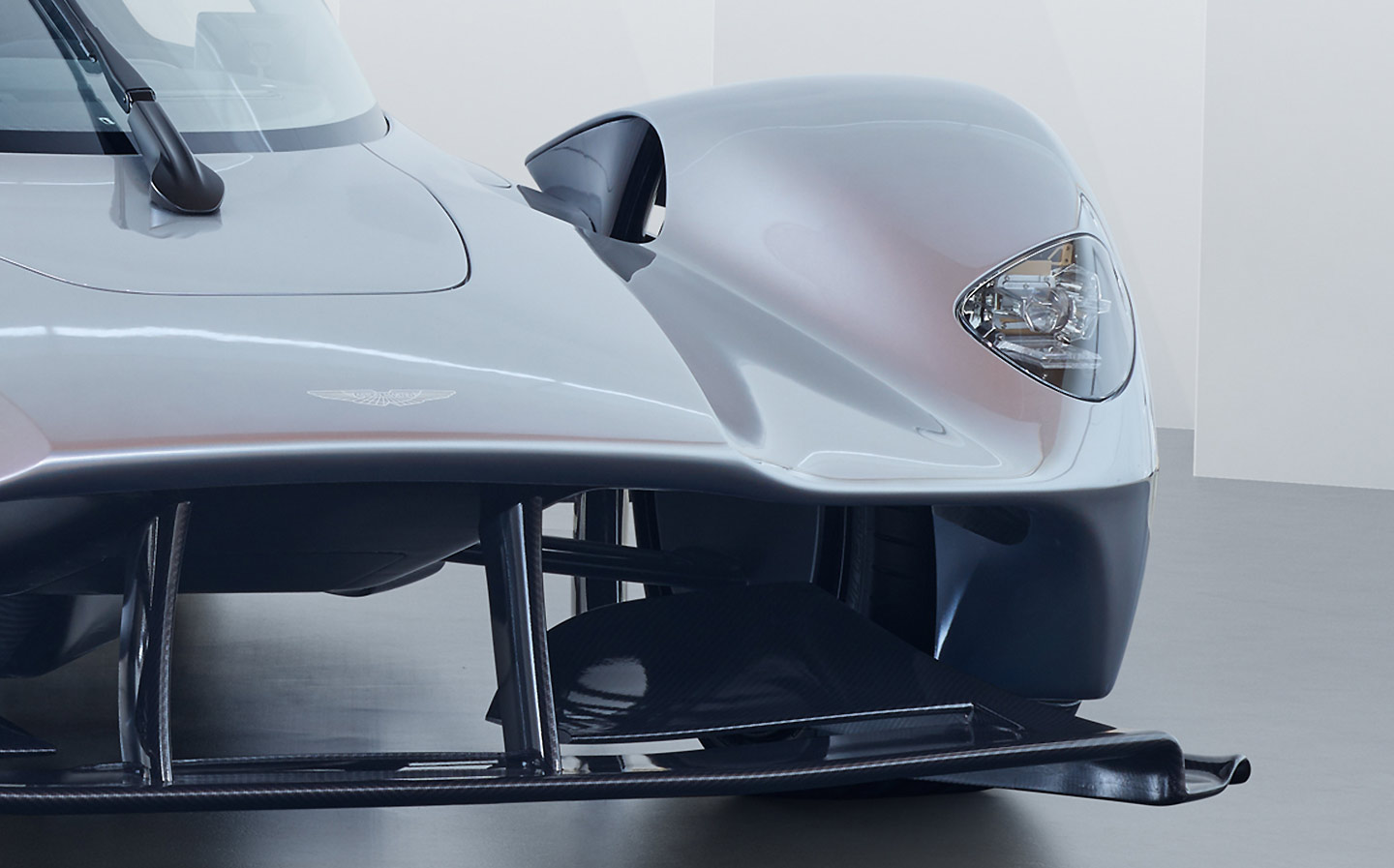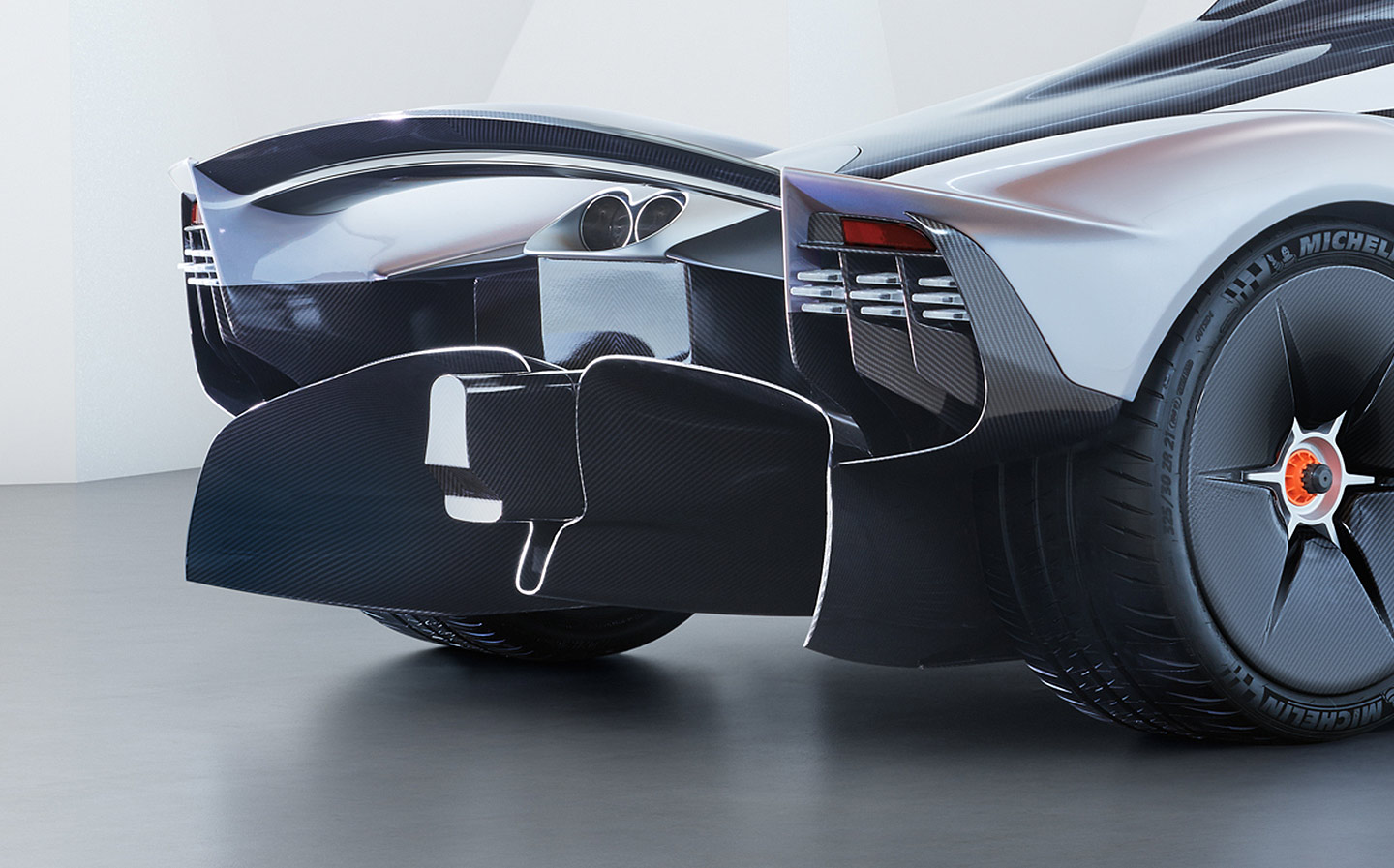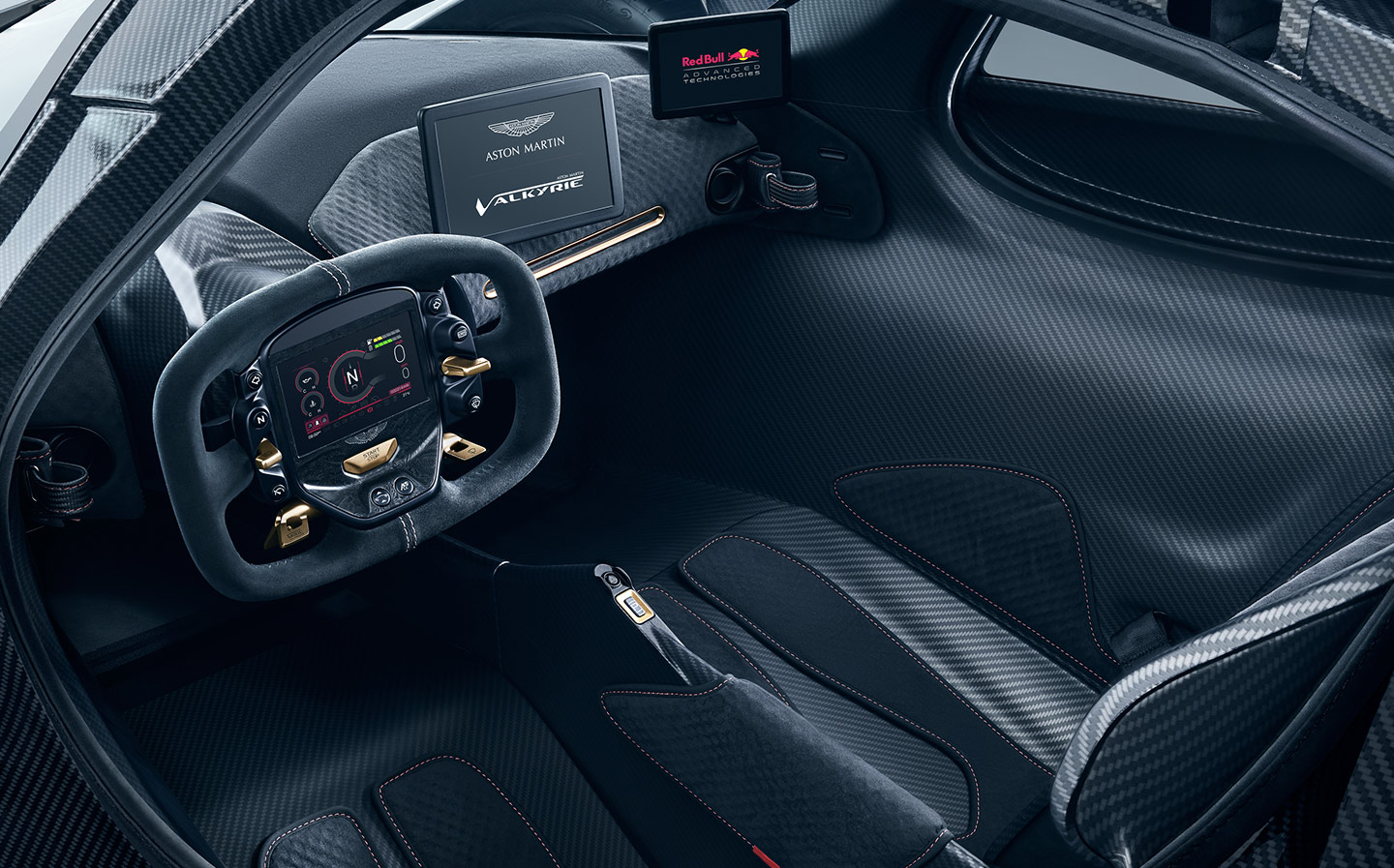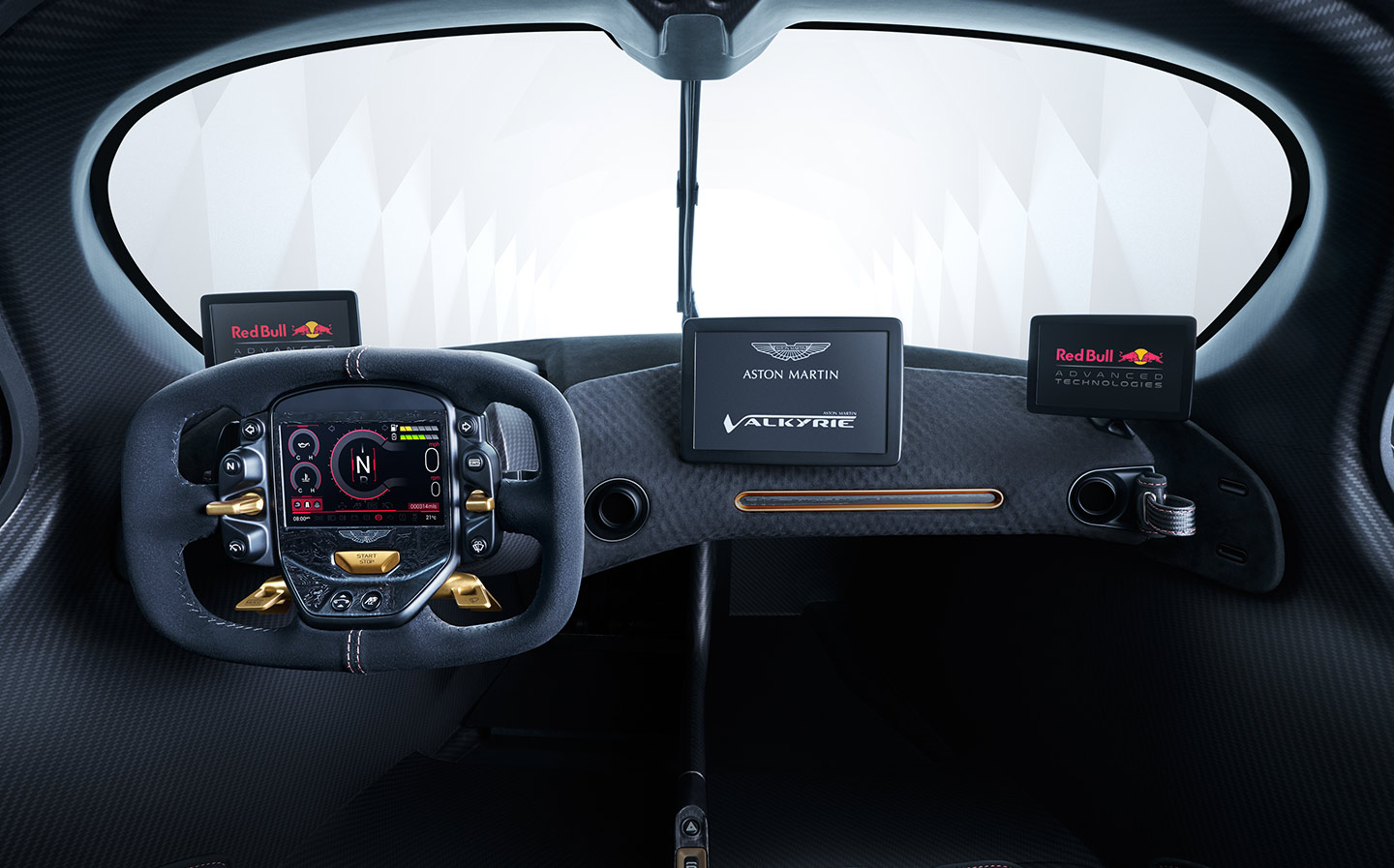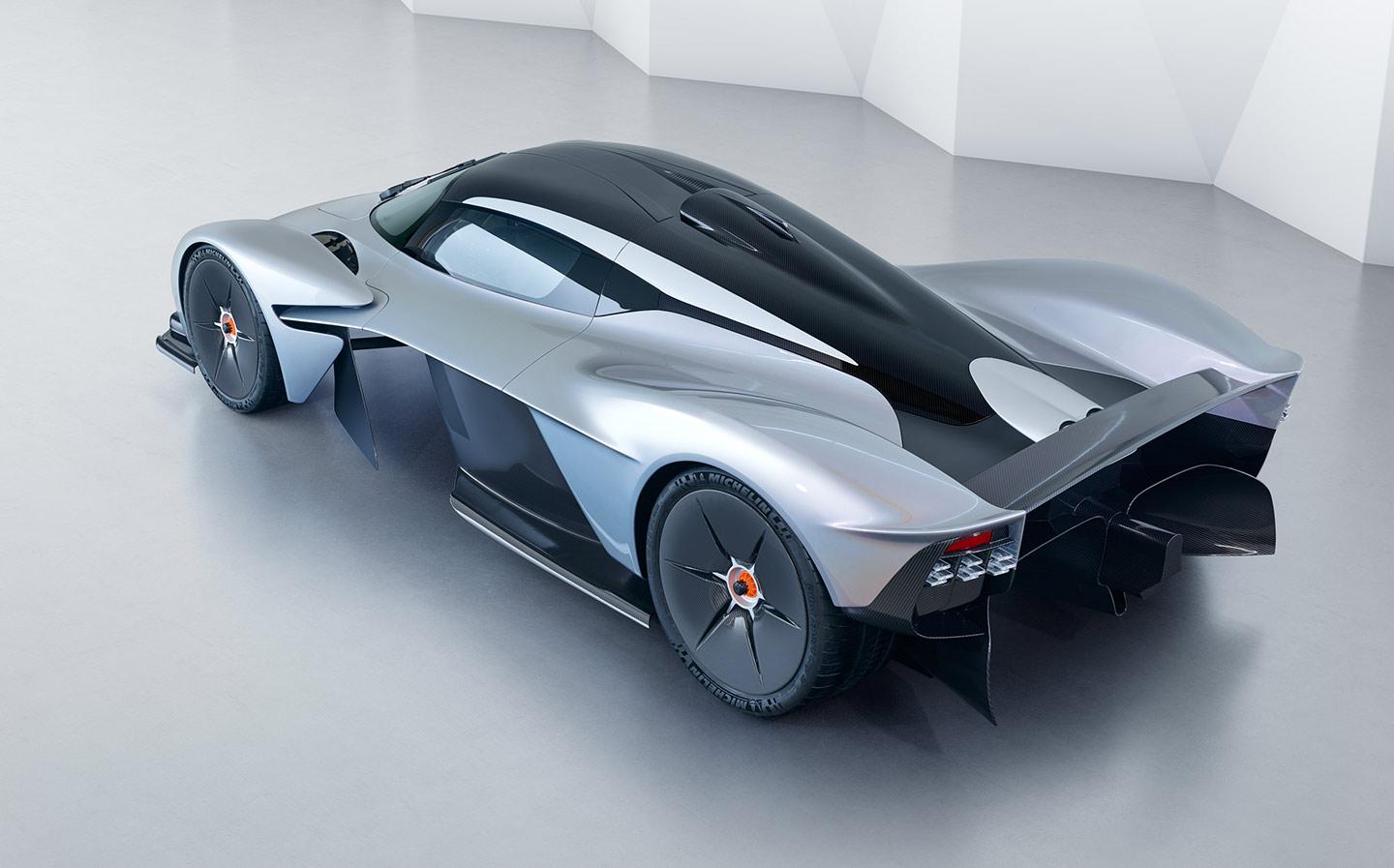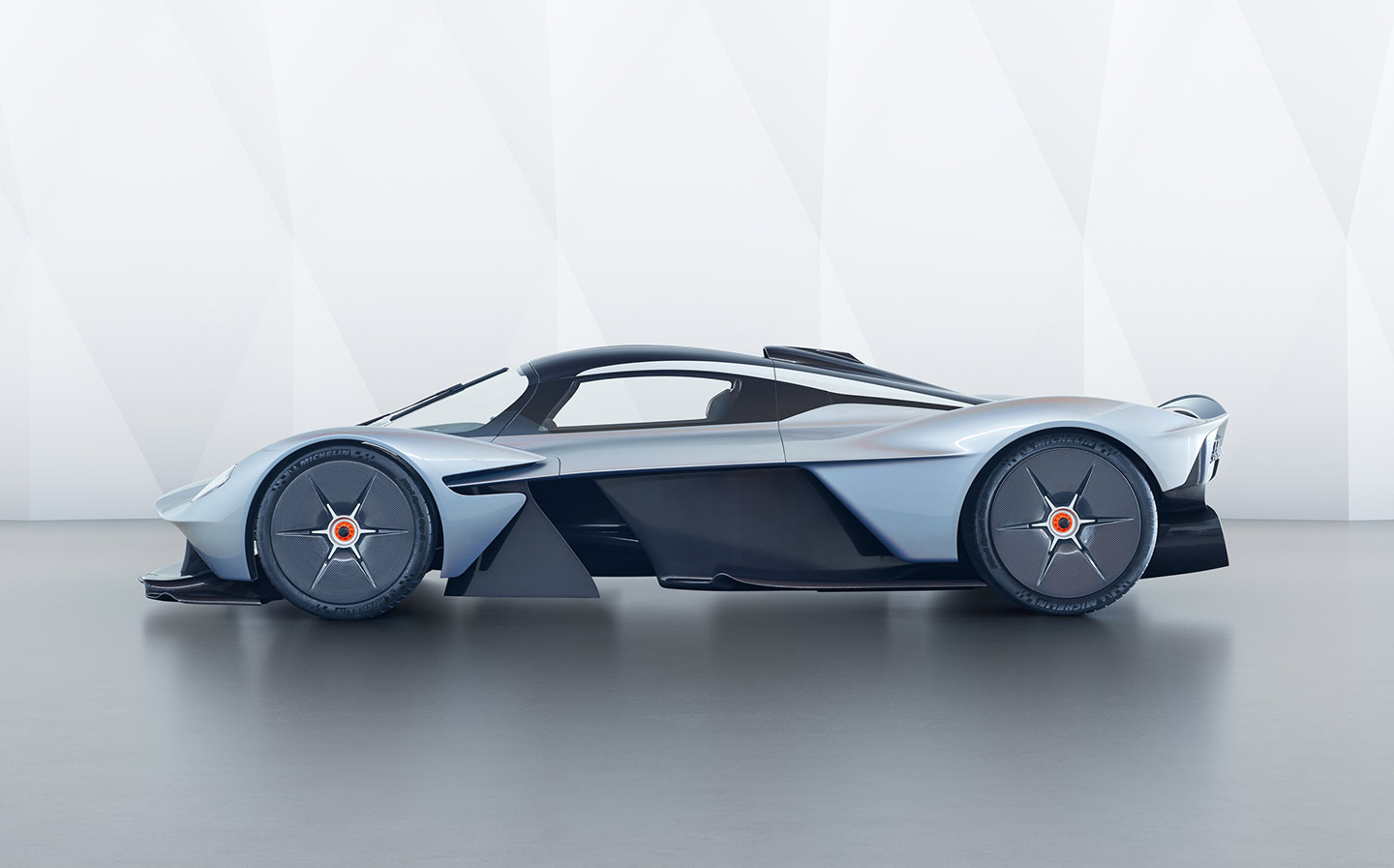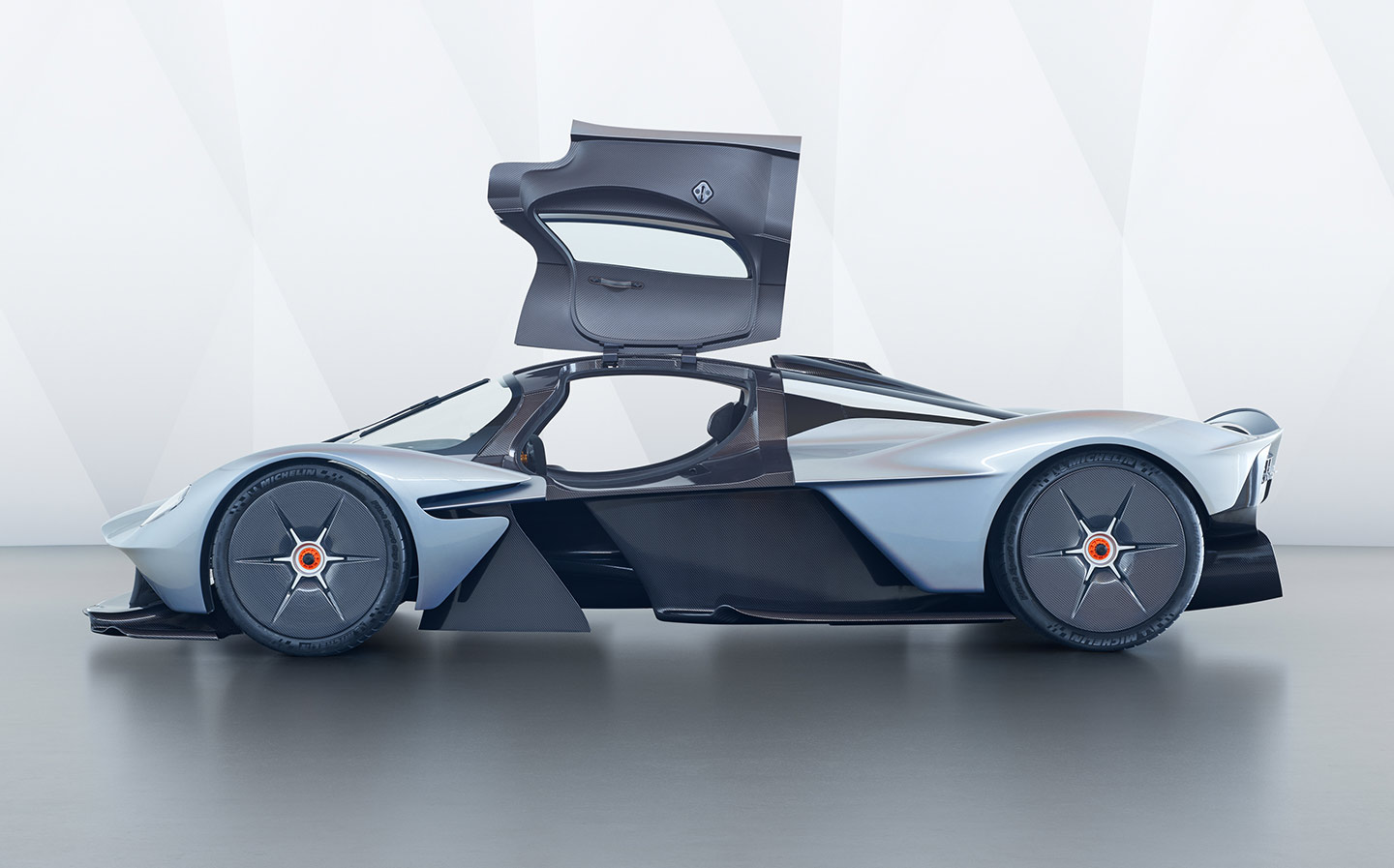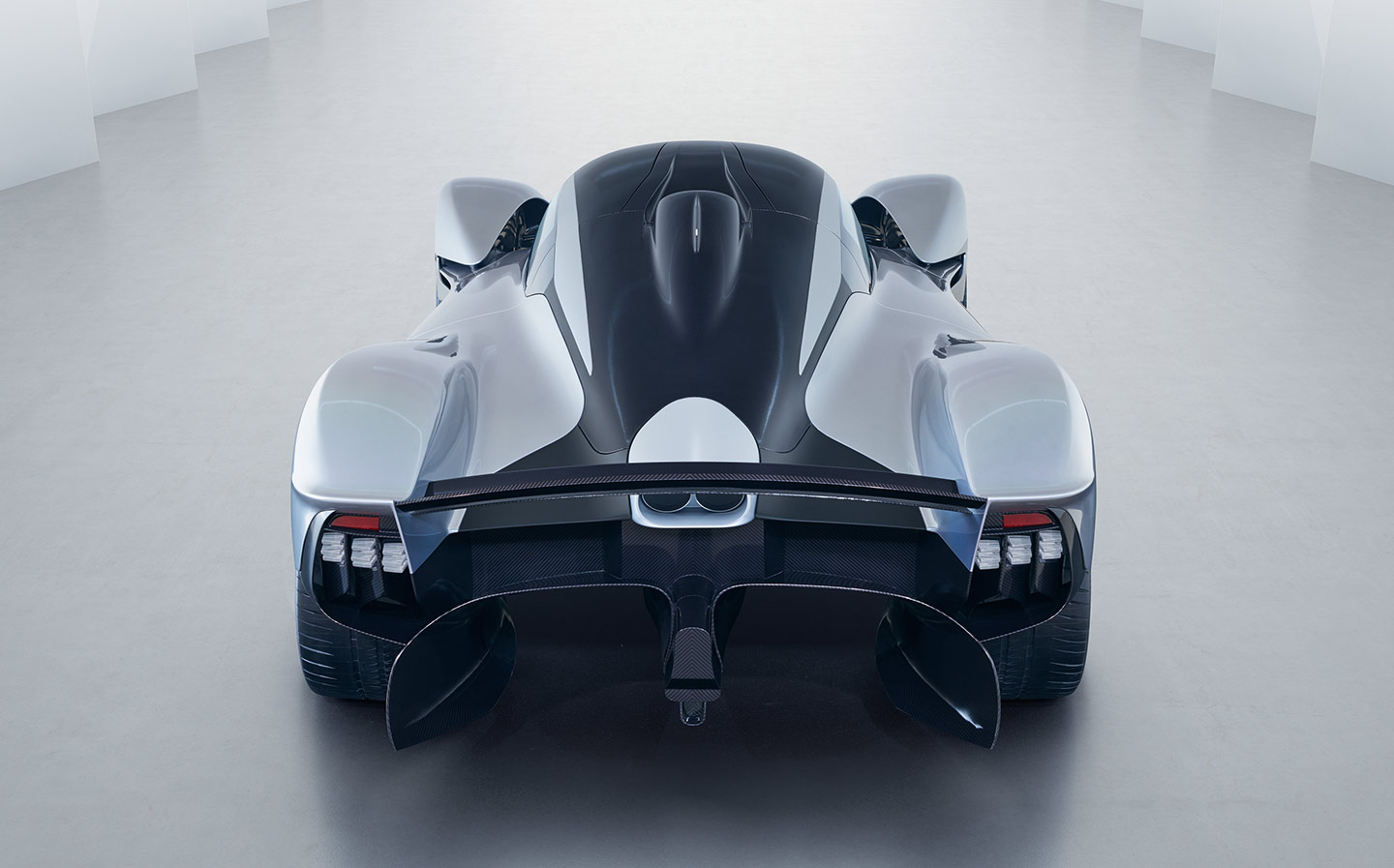New photos of ultra-fast F1-inspired Aston Martin Valkyrie hypercar revealed
The British firm's 1,000bhp road-legal stunner has had aerodynamic and cockpit design tweaks as production approaches
ASTON MARTIN has released images of updates to the Valkyrie, as its Le Mans racer-style roadgoing hypercar nears production.
No details of the drivetrain have been revealed today — the information is all about tweaks to the design, which is now apparently about 95% complete — but the Valkyrie is expected to be powered by a 6.5-litre 12-cylinder engine from Cosworth producing more than 900bhp, with hybrid electric tech bringing total output to as much as 1,130bhp.
Aston Martin has been working with Red Bull Advanced Technologies (under the guidance of the Formula One design supremo Adrian Newey) and AF Racing to resculpt the upper body design and cockpit floor to improve airflow.
New vents create more downforce at the front, while air passing through venturi tunnels to the rear diffuser adds to the overall “extraordinary” forces pinning the car to the ground. Reports suggest the Valkyrie could produce as much as 1,816kg of downforce at top speed, the equivalent of a Renault Kadjar SUV on its roof, and almost double its own expected weight of about 1,000kg.
The quest to shed weight has reached almost comical extremes. As well as devising headlights that are 30%-40% lighter than the lightest ones used on other production Astons, the team has developed a chemically etched aluminium Aston Martin “wings” badge just 70 microns thick (a little thinner than a human hair). The resulting emblem (nicknamed the “lacewing”) is attached to the painted nose and covered with lacquer.
Behind the gullwing doors two occupants recline in a racing-style “feet up” position, strapped in with a four-point safety harness as standard (an optional six-point harness is also offered). All switchgear is on the detachable steering wheel, with info such as oil temperature, speed and fuel level shown on a single Oled display in the centre.
Door mirrors have been replaced by hidden rear-facing cameras in the Valkyrie’s flanks, feeding live video to screens at the base of each A-pillar. Aston says the “glasshouse” design ensures “forward and peripheral side-to-side vision is virtually uninterrupted”; as for rear visibility, forget it: the bodywork and roof-mounted engine air intake rule that out.
Not that customers will be bothered by such trifles. Or the £2.5m price tag.


